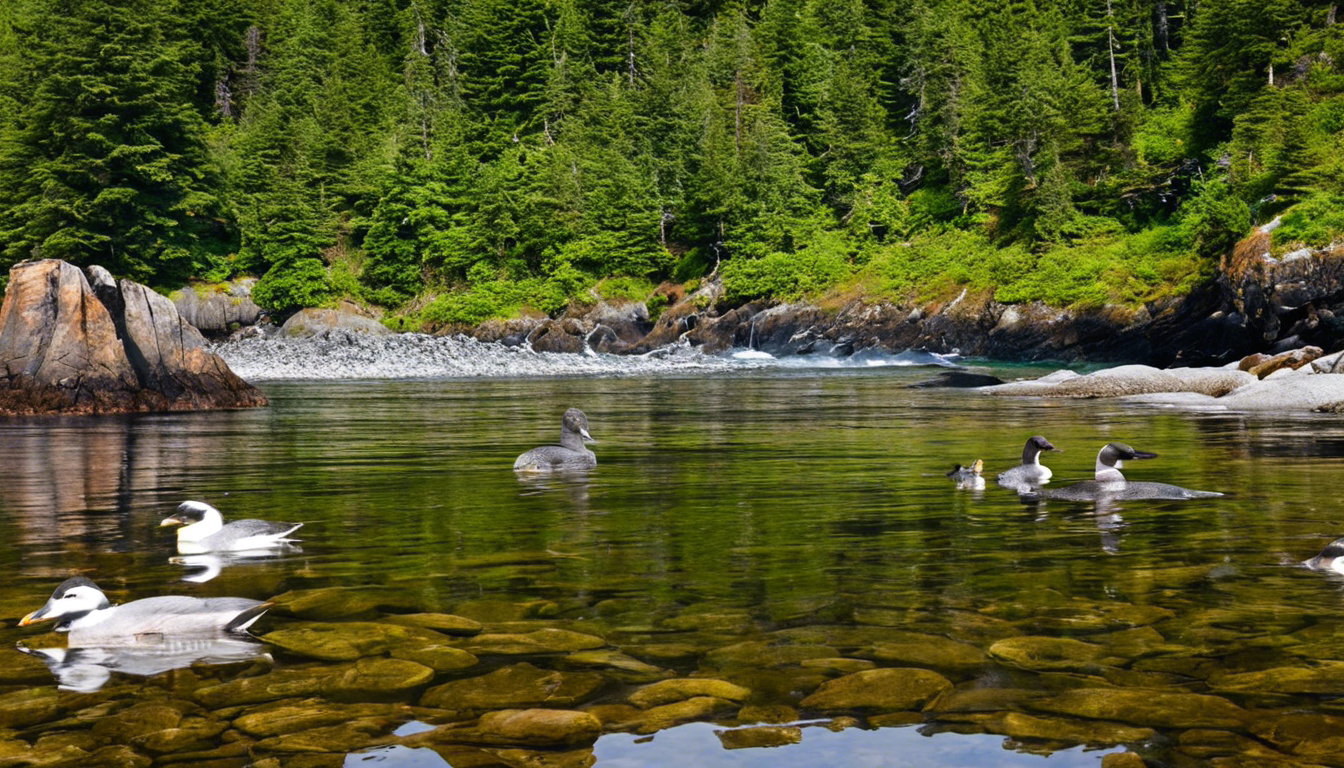1. Ketchikan Downtown: Where Culture Meets Convenience
Nestled in the heart of Alaska's panhandle, Ketchikan Downtown is more than just a hub of convenience; it's a vibrant blend of natural beauty and rich cultural heritage. This neighborhood, characterized by its stunning natural surroundings, offers residents and visitors alike an unparalleled living experience. With lush rainforests and abundant wildlife at your doorstep, life in Ketchikan Downtown is an adventure waiting to be discovered. Outdoor enthusiasts will revel in the variety of activities available, from fishing to hiking, ensuring that every day is filled with the excitement of exploring Alaska's great outdoors.
However, living in this picturesque setting comes with its unique challenges. The city is known for its significant rainfall, receiving an average of 14 feet per year, and conditions can be extremely windy, especially during fall. Despite these weather-related hurdles, the community's spirit remains undampened, with residents embracing the beauty and opportunities that come with their locale. The cost of living here reflects its remote nature, with higher prices for fresh meat, produce, and housing. Yet, the financial benefits such as the Alaska Permanent Fund and no state income tax offer some respite to the residents.
The downtown area is a cultural epicenter, proudly displaying its Native culture through totems and clan houses, and hosting several carvers who contribute to the town's artistic legacy. The presence of excellent medical care, a modern library, and a museum add to the quality of life here, making it a well-rounded place to live. Despite its relatively small size, Ketchikan Downtown boasts a friendly and supportive community, where social life often revolves around gatherings with friends and neighbors, offering a warm welcome to all who visit or decide to make it their home.
For those considering a move to Ketchikan Downtown, it's a place that promises a blend of cultural richness, natural beauty, and community warmth. From its weather challenges to its high cost of living, it's a place that requires resilience and adaptability. Yet, for many, the unique lifestyle, close-knit community, and connection to nature make it all worthwhile, offering a living experience unlike any other. Whether you're drawn to the outdoor adventures, the cultural heritage, or the friendly community, Ketchikan Downtown is a place where culture truly meets convenience, making it an ideal neighborhood for those looking to experience the best of Alaska.
Adding to the rich tapestry of Ketchikan Downtown, recent statistics offer a deeper insight into the community and its dynamics. The Ketchikan Gateway Borough, which encompasses the downtown area, had a population of 13,741 as of July 1, 2022, marking a slight decrease from the previous census (source). This subtle shift reflects the broader trends affecting many parts of Alaska, with a -1.5% population change from April 1, 2020, to July 1, 2022. Despite these changes, the community's spirit and commitment to preserving its unique way of life remain undeterred.
Education and economic well-being are cornerstones of the Ketchikan Downtown area, with a high school graduation rate of 94.7% and a bachelor's degree or higher attainment of 28.5% (source). The median household income stands at a robust $82,763, underscoring the community's financial resilience and the opportunities available to its residents.
Housing and living conditions also paint a picture of stability and community focus, with a median value of owner-occupied housing units at $361,000 and a median gross rent of $1,275 (source). These figures, coupled with a 65.7% owner-occupied housing unit rate, showcase the community's investment in creating a stable and welcoming environment for all its members.
As Ketchikan Downtown continues to evolve, it remains a beacon of culture, convenience, and community spirit, offering a living experience that's deeply connected to the natural beauty and rich heritage of Alaska.
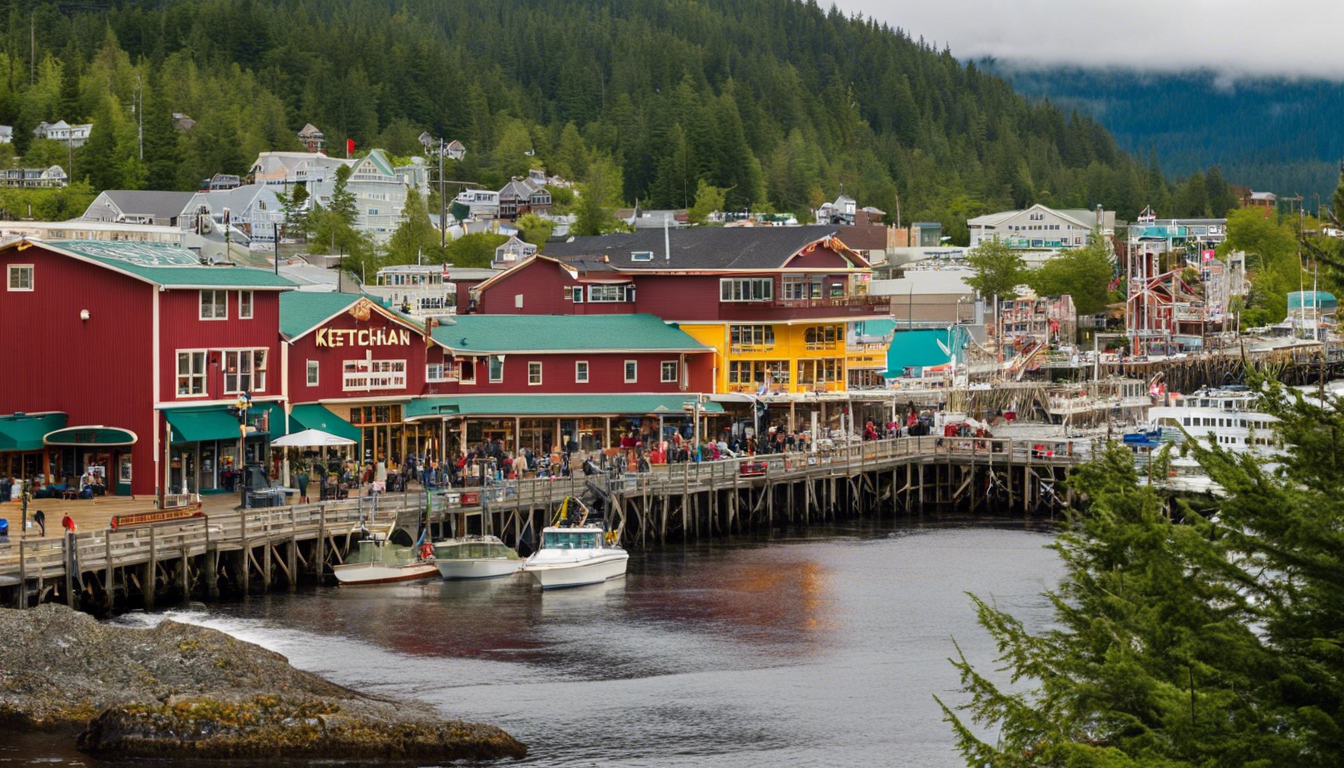
2. Saxman: A Cultural Gem
Saxman, a small village near Ketchikan, emerges as a cultural gem within Alaska's vast landscape. This area, rich in Native American heritage, is a testament to the enduring spirit and artistry of the local Tlingit community. Visitors and residents alike are drawn to Saxman for its iconic Totem Bight and Saxman Village, where the totem poles stand tall, telling stories of ancestral legacies and cultural lore. These landmarks serve as a bridge between the past and the present, inviting everyone to delve into the rich tapestry of Tlingit culture.
Beyond the static beauty of totem poles, Saxman vibrates with life. The village is a hub for adventurers and explorers, offering experiences like jeep tours around Ketchikan, trips to the mesmerizing LeConte Glacier, and the exploration of Glacier Bay. For those seeking a more hands-on adventure, charter salmon fishing, floatplane journeys to remote cabins, and backcountry hiking in bear habitats promise an adrenaline rush, albeit with a strong emphasis on safety and preparedness.
Living in Saxman, like much of Ketchikan, presents its unique set of challenges and rewards. The city is renowned for its substantial rainfall, receiving an average of 14 feet of rain annually, which contributes to the lush, verdant landscape that surrounds this community. High living costs, influenced by the area's remoteness and lack of direct road connections to the mainland, are somewhat mitigated by tax exemptions and benefits for residents, particularly those over 65. This, coupled with the Alaska Permanent Fund and no state income tax, helps residents navigate the financial aspects of life in this beautiful, albeit wet, corner of the world.
The essence of Saxman is best captured in the tight-knit community that calls it home. It's a place where the stunning natural beauty, the wildlife, and the palpable sense of culture converge to create a living environment that is as challenging as it is rewarding. Excellent medical care, a new library, and a museum contribute to the quality of life here, making Saxman not just a place to visit, but a place to live a life deeply connected to nature and tradition. Whether it's the call of the wild or the lure of a community steeped in cultural richness, Saxman offers a unique slice of Alaskan life that continues to enchant those who make the journey.
Adding to this rich narrative, recent statistics paint a detailed picture of Saxman and its community. As of the 2020 census, Saxman had a population of 384, indicating a vibrant community within its 0.96 square miles of land area. This small city, known in Tlingit as T’èesh Ḵwáan Xagu, stands out as one of the totem capitals of Alaska (source). The racial composition is predominantly Native American at 66.13%, highlighting the area's strong indigenous heritage. Despite facing challenges such as a median household income of $44,375 and approximately 12.1% of the population living below the poverty line, Saxman's community is marked by resilience and a deep connection to its cultural roots.
Further enriching our understanding, data from 2021 showcases Saxman's dynamics in more recent times. The population saw an 8.54% increase from the previous year, reaching 356 residents. This growth is accompanied by a median age of 48.8 years and a poverty rate of 19.9%, reflecting both the challenges and the enduring spirit of the community. The median household income grew to $46,250, and the median property value rose to $227,900, evidencing economic development amid the natural beauty and cultural richness that define Saxman (source).
Saxman, with its population of 361 people across an area of 1 square mile, presents a unique blend of cultural heritage and natural beauty. The community's emphasis on education is notable, with 89.5% of the population having graduated high school or higher. The median value of owner-occupied housing units stands at $268,800, reflecting the community's investment in creating a stable and welcoming environment. This small but mighty village continues to thrive, offering a testament to the resilience and cultural richness of its people (source).
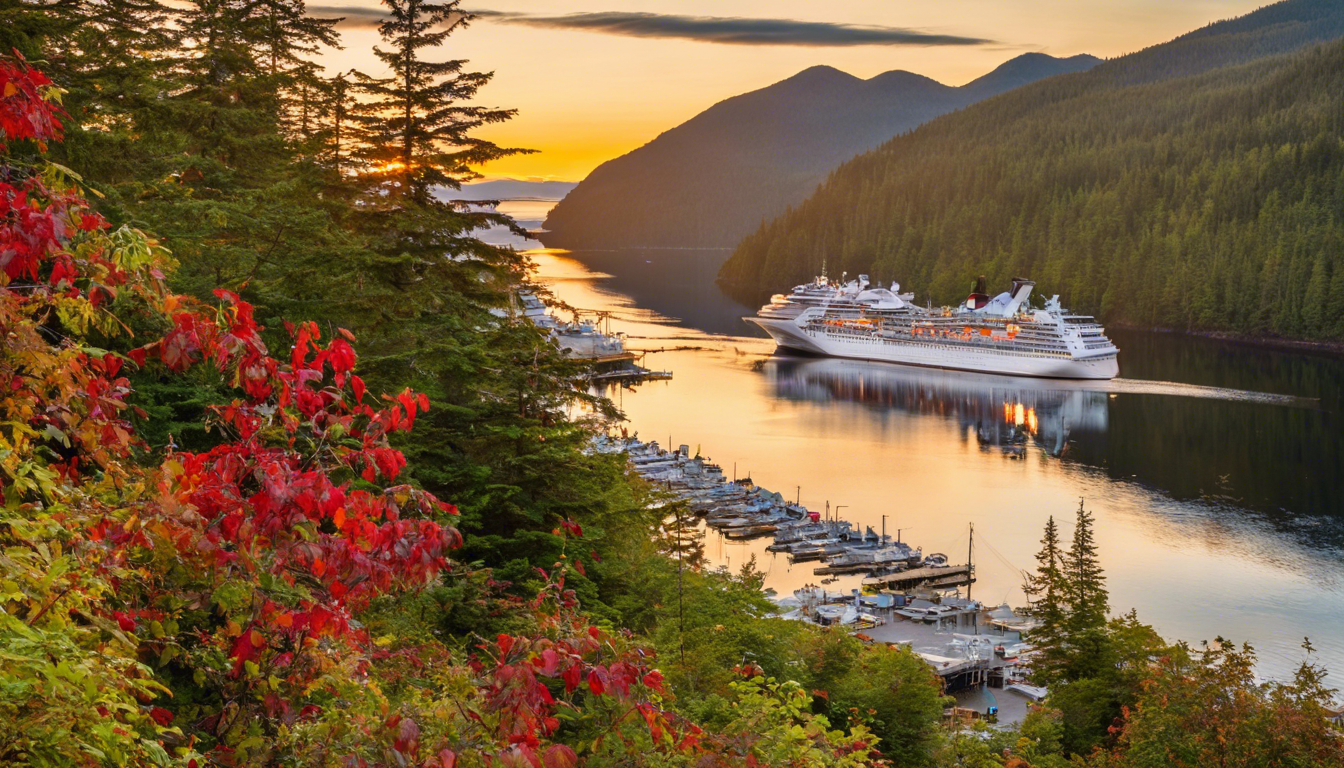
3. Clover Pass: The Outdoor Paradise
Clover Pass, a serene and picturesque neighborhood in Ketchikan, Alaska, stands as a testament to the sheer beauty and tranquility of the Alaskan wilderness. This area, renowned for its breathtaking landscapes and abundant wildlife, offers a unique living experience that is both peaceful and invigorating. With the Pacific Ocean at its doorstep, Clover Pass provides an unparalleled opportunity for residents and adventurers to immerse themselves in a plethora of outdoor activities, from kayaking and boating to some of the best fishing experiences Alaska has to offer.
Clover Pass Resort in Ketchikan, Alaska, enhances this outdoor paradise by offering a range of fishing experiences including Guided Salt Water Packages, Self-Guided Packages for 3 to 5 days, and Custom Packages allowing guests to choose their stay duration and fishing type. The resort prides itself on providing all necessities for an unforgettable fishing, lodging, and dining experience, catering to both beginners and experienced anglers. Notable offerings include accommodations, ground transportation in Ketchikan, meals, snacks, desserts, fish filleting and packaging, all fishing gear, and life jackets. A $250 deposit is required for self-guided options, and $500 for guided, both nonrefundable. Additional costs not covered include gratuities, personal items, and fishing licenses. Guests are advised to fly into Ketchikan International Airport, where transportation to the lodge is arranged, promising an abundance of fish, including all five Pacific salmon species, with limits ranging from 1 to 6 per day per person depending on the species. Dining options feature prime rib to sea feasts prepared by expert chefs, with three meals a day plus unlimited snacks, soda, and desserts (source).
Living in Clover Pass, however, is not without its challenges. The remote location and exposure to the elements mean that residents must be prepared for the unpredictability of Alaskan weather, with its mix of rain, fog, and, on occasion, brilliant sunshine. Despite these minor hurdles, the natural beauty and sense of community in Clover Pass make it an idyllic place for those seeking a connection with nature and a slower pace of life.
The neighborhood is not just about the great outdoors; it also offers a sense of belonging and community. The people of Clover Pass are known for their warmth and hospitality, welcoming newcomers with open arms and creating a supportive environment that feels like home. This strong sense of community, combined with the stunning natural environment, makes Clover Pass a hidden gem for anyone looking to embrace the Alaskan lifestyle.
For those considering making Clover Pass their home, it promises a life of adventure, tranquility, and community. It’s a place where the majesty of Alaska can be experienced in its full glory, from the comfort of your backyard. Clover Pass is more than just a neighborhood; it’s an outdoor paradise that offers a unique and fulfilling lifestyle for its residents. Whether you're drawn by the lure of the ocean, the peace of the wilderness, or the warmth of the community, Clover Pass is a place that has something for everyone, making it an ideal choice for those seeking the ultimate Alaskan experience.
Clover Pass is an unincorporated community in Ketchikan Gateway Borough, Alaska. A notable event is the organization and construction of the Clover Pass School in 1947, which later served as a community center in the 1960s. The area experienced a shipwreck incident with the sinking of Wards Cove due to an engine fire in 1929. Clover Pass is located by Clover Passage at Potter Point and features a marina that is popular for sportfishing, kayaking, and sailing. It is also home to Clover Pass Resort, which includes campsites. The geographical coordinates for Clover Pass are 55°28′20″N 131°47′30″W (source).
Clover Pass is a populated place located in Ketchikan Gateway Borough, Alaska, with geographical coordinates of latitude 55.472 and longitude -131.792. It is featured on the Ketchikan B-6 NE U.S. Geological Survey Map. The borough falls within the Alaska Time Zone, which is UTC -9 hours. Nearby locations include Ketchikan (10.7 miles SSE), Loring (10.9 miles NE), Saxman (13.1 miles SE), and Kasaan (24.3 miles W), with nearby smaller populated places like Port Higgins, Mud Bay, Ward Cove, and Refuge Cove (source).
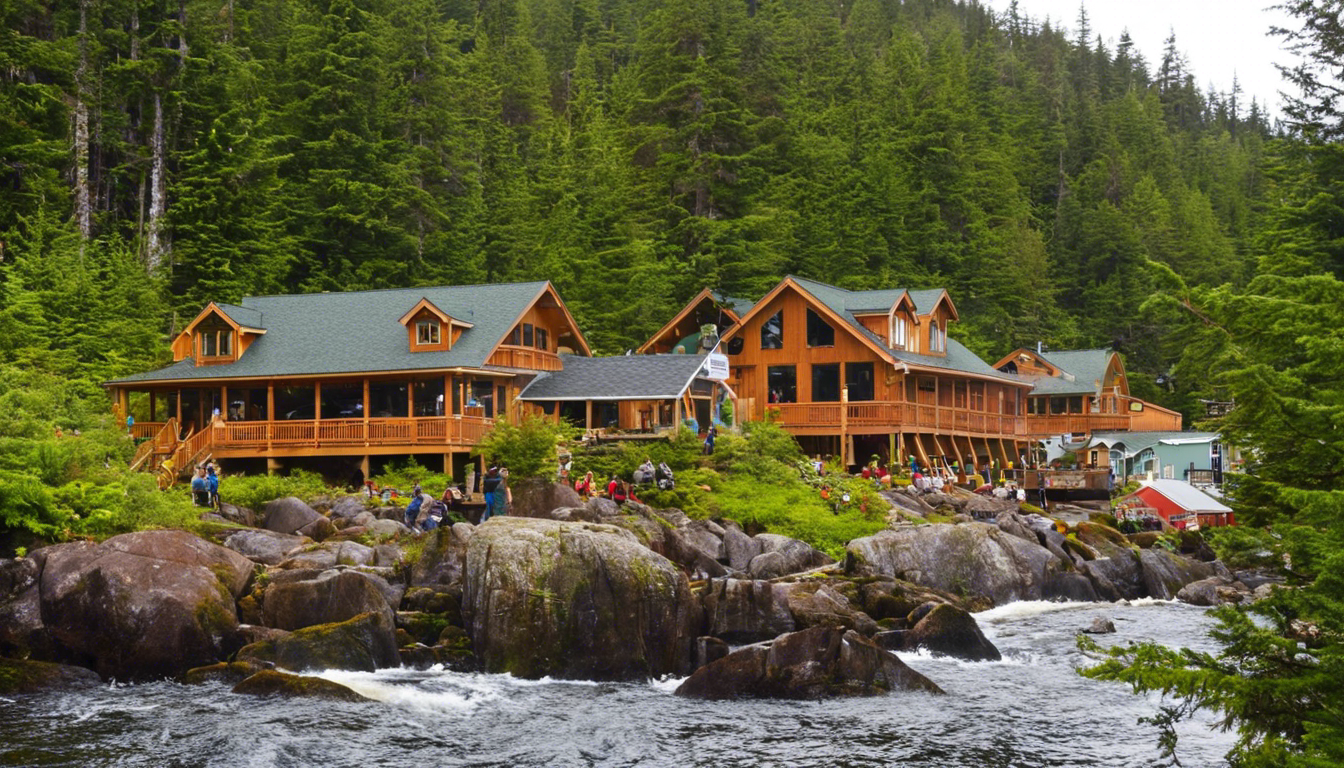
4. Pennock Island: Unique Seclusion
Pennock Island, nestled near the bustling city of Ketchikan within the Ketchikan Gateway Borough, offers a living experience that's as unique as its secluded setting. This island, part of the Alexander Archipelago and predominantly public land managed by the Tongass National Forest, embodies the essence of Alaskan wilderness. Measuring approximately 3 miles in length and between 0.25–0.625 miles in width, Pennock Island boasts a low, wooded terrain with a steep south shore, featuring notable geographic features such as California Rock and East Clump islet, as well as Pennock reef extending into the Tongass Narrows (source).
The residents of Pennock Island enjoy a lifestyle deeply intertwined with nature, where outdoor activities such as fishing, boating, jet skiing, and hiking are not just hobbies but a way of life. The community's warmth and welcoming spirit are palpable, creating a supportive environment where neighbors become friends and friends become family.
Living on Pennock Island comes with its set of challenges, including higher costs of living characteristic of Alaska's more remote locations. Despite these hurdles, the island's residents find solace in the unmatched natural beauty that surrounds them, with an average of 14 feet of rain annually ensuring the landscape remains lush and vibrant. This, coupled with the strong Native culture and the fishing industry that dominates the local economy and social life, adds depth to the community's identity, making it a unique place to live.
The island was named after prospector Homer Pennock around 1895, and it is notable for its ancestral tribal burial grounds of the Taan ta Kwaan and the Sanyaa Kwáan tribes. It gained national attention due to the controversial Gravina Island Bridge proposal, criticized as the "bridge to nowhere." Historically, it first appeared on the 1940 United States census as an unincorporated settlement and has seen various changes in its census designation over the decades. The island also hosts the annual "Pennock Island Challenge" swim race, started in 2004 to raise funds for the JDRF, covering a distance of 8.2 miles around the island with categories for solo and relay races in both wetsuit and non-wetsuit divisions (source).
Situated between Gravina and Revillagigedo Islands, Pennock Island is a physical feature that divides Tongass Narrows into its East and West Channels. The primary coordinates place Pennock Island within the AK 99901 ZIP Code delivery area, identifiable by latitude 55.328 and longitude -131.629. Nearby cities include Saxman, Ketchikan, Metlakatla, and Loring, along with smaller populated places such as Dairy, Carlanna, Herring Cove, and Mountain Point. This area operates under the Alaska Time Zone, which is UTC -9 hours, further emphasizing the island's unique position within the Ketchikan Gateway Borough (source, source).
Despite the logistical challenges and the high cost of living, the residents of Pennock Island wouldn't have it any other way. The clean air, abundant wildlife, and the sense of community spirit are treasures that outweigh the inconveniences. With excellent medical care, quality dining, entertainment options, and a strong educational foundation through its library and museum, Pennock Island offers a balanced lifestyle. It's a place where the small community vibe fosters mutual support and care, creating a unique living experience for those fortunate enough to call it home.
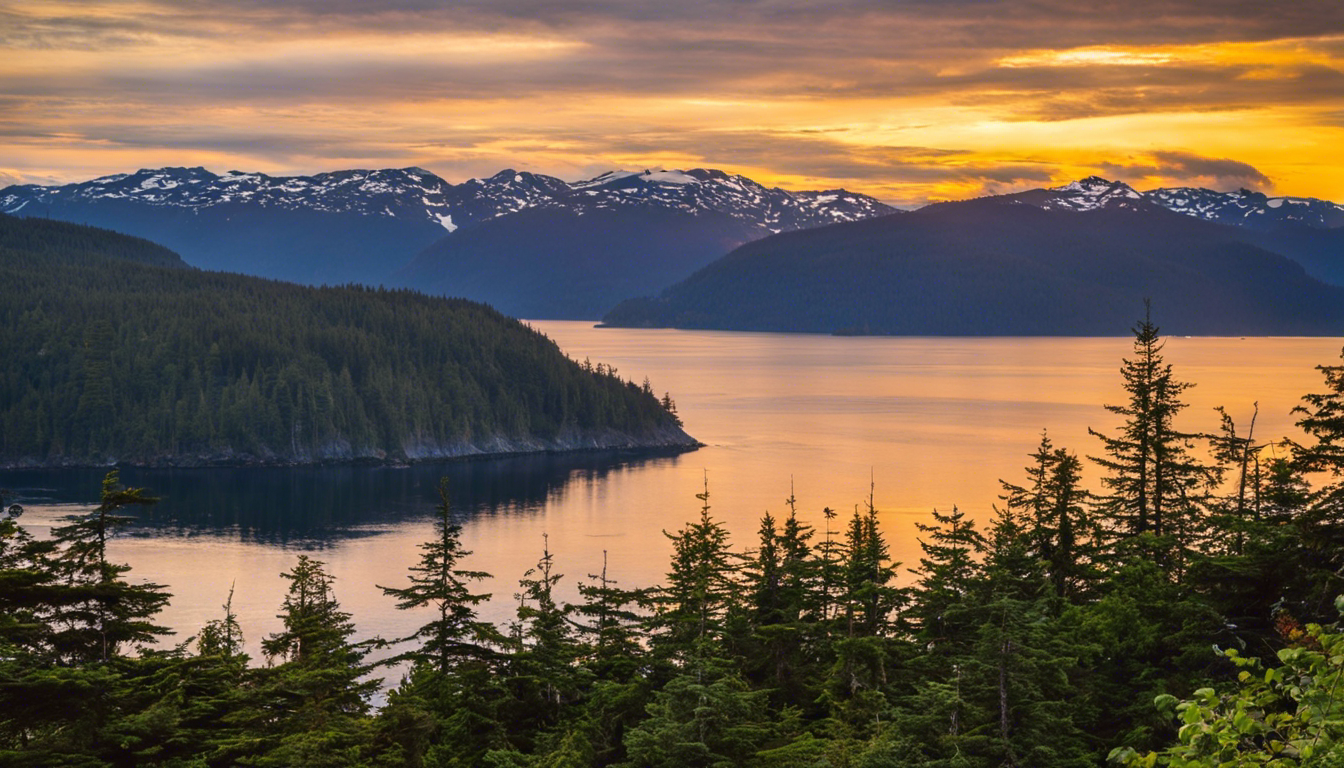
5. Herring Cove: Wildlife Wonders
Nestled in the southern reaches of Ketchikan, Alaska, Herring Cove offers a living experience that's as close to nature as one can get. This secluded enclave is renowned for its direct connection to the wild, where the lines between the human and natural world blur beautifully. Residents of Herring Cove enjoy an unparalleled proximity to wildlife, including the majestic run of Sockeye salmon, the stealthy brown bears, and the elusive wolves that roam the expansive wilderness (source).
Adding to its charm, Herring Cove is a populated place located within the Ketchikan Gateway Borough, Alaska, prominently featured on the Ketchikan B-5 SW U.S. Geological Survey Map. The area, positioned at latitude 55.325 and longitude -131.522, falls within the Alaska Time Zone (UTC -9 hours). Its proximity to places like Saxman, AK (3.1 miles W), and Ketchikan, AK (4.9 miles WNW), makes it a notable point of interest for those looking to explore the Alaskan wilderness (source).
Herring Cove is not only celebrated for its scenic beauty but also as a landmark for wildlife enthusiasts. Rated #27 out of 62 things to do in Ketchikan, it offers a chance to see wildlife including bears, eagles, and salmon, making it particularly appealing to nature lovers. The area is accessible and provides ample opportunities for wildlife viewing, with tours available that range from $59.00 to $950.00 per group. According to reviews, the best times for bear sightings are around low tide, with many visitors experiencing unforgettable wildlife sightings during their visits (source).
The unique lifestyle here is characterized by the extremes of daylight variability, with summer bringing almost endless daylight and winter shrouding the cove in prolonged darkness. This natural phenomenon plays a significant role in the daily lives of residents, influencing everything from sleep patterns to mood (source).
Despite the challenges posed by harsh winters and the community's dependence on imported goods due to its isolation, there's a palpable sense of belonging and resilience among the people of Herring Cove. The strong community spirit, low crime rate, and mutual support in times of need underscore the area's appeal to those seeking a life less ordinary (source).
Economic considerations, such as the high cost of living driven by logistics and the absence of road connections to the outside world, are balanced by the financial benefits offered to residents, including no state income tax and the Alaska Permanent Fund dividend. This economic landscape, coupled with the cove's cultural richness and the daily presence of natural beauty and wildlife, contributes to a high quality of life that's both challenging and rewarding (source).
For those drawn to a life intertwined with nature, Herring Cove promises an existence filled with the raw beauty of Alaska's wilderness. It's a place where eagles soar overhead, deer roam freely, and the air is as clean as it is cold. Here, life moves at the rhythm of the seasons, and the community thrives in a balance of independence and interconnectedness, making Herring Cove a true wildlife wonder (source).
